Effect of Elastane on Physical Properties of 1×1 Knit Rib Fabrics
MOHAMMAD Abu Nasir Rakib ,LI Wei(李 炜),SYED Rashedul Islam,MD Obaidul Islam
1 Department of Textile Engineering,College of Textiles,Donghua University,Shanghai 201620,China2 Key Laboratory of Textile Science & Technology,Ministry of Education,Shanghai 201620,China3 Department of Textile Engineering,BGMEA University of Fashion and Technology,Bangladesh
Abstract: Because of wearing and washing the knit rib fabrics are highly vulnerable to lose their dimensional stability. The work investigated the physical properties of 1×1 knit rib fabrics with or without elastane. The fabrics made from 100% cotton yarn were compared with the fabrics made from cotton/elastane (95%/5%) blended yarns by Lisky circular knitting machine. Pilling,shrinkage,spirality,and bursting strength were tested by the ICI pilling test box,Wascator,and TruBurst machine to demonstrate the effect of elastane on fabric properties. Experimental results showed that elastane has a noteworthy impact on the physical properties of 1×1 knit rib fabrics which can make the fabrics more durable and dimensionally stable in practice.
Key words: 1×1 knit rib fabrics; elastane; cotton; pilling; spirality; bursting strength; shrinkage test
Introduction
One of the ways of fabric manufacturing is knitting in which the fabric is made from the intermeshing of loops produced either vertically or horizontally. In weft knitting,the loop formation occurred in the horizontal direction; on the other hand,in warp knitting the loops are formed in the vertical direction. One of the characteristics of knit fabrics is more elastic than woven fabrics that allows it to use in different application including inner,outer,sportswear and industrial purpose as well[1-4]. It shows the appearance of a vertical chord and technical face on both sides of the fabrics unless it stretched which will show the reverse wales in between[2,5]. In Fig. 1,two sets of needles are required to produce the 1×1 knit rib fabrics in which stitches and wales of reverse stitches are knitted on each side of the fabric[3]. In theory,in a relaxed state,rib fabrics are double in width as compared to single jersey plain fabric[5]. Good elastic recovery and free from curling tendency makes this 1×1 knit rib fabrics to be used widely in cuffs,collars,outerwear,sweaters,and so on[6-7]. Elastane is one of the synthetic fibers formed by a high molecular weight of linear macromolecules. The dry spinning technique is used for the production of elastane development,in the research division of E.I. Pont de Nemours & Co.,Inc. (USA)[8]. In the commercial market,it is also known as “Lycra”. It also has nearly 95% of elastic recovery[9-10]. In practice,elastane is used in different inner and outer garments including swimwear,sweaters,medical support stockings,underwear,tights,etc. Because the properties of its high elastic recovery elastane is extensively used to retain the garment shape in desirable form,uses of elastane in the fabric influence the different properties as well. Because of its high elastic recovery loop formed with elastane causes the decreases in the fabric width,in the meantime increases in the fabric thickness[2,3,9]. This paper collaborated on the effects and influence of using elastane in 1×1 knit rib fabrics structure by considering the results of different tests such as pilling,shrinkage,spirality and bursting strength.

Fig. 1 Structure and notation diagram of 1×1 knit rib fabrics
1 Experiments
1.1 Materials
Different 1×1 knit rib fabrics green colored yarn samples made from 100% cotton and cotton/elastane(95%/5%) blended yarn were taken from Knit Concern Group BD Limited,Bangladesh. All the samples no matter what their constructions are made by Lisky circular knitting machine of 30 dia. & 18 gauges. Besides,cotton yarn count for both fabrics is 44 N·m and count of elastane is 22 dtex. Both fabrics are different in their gram square meter (GSM) and stich lengths.
1.2 Methods
1.2.1Sampling
In Table 1,A and B represented the fabric made from 100% cotton yarn and 95%/5% cotton elastane blended respectively. Total (30±6) samples of different sizes (according to the experiment types) were taken for conducting different experiments including pilling,bursting strength,spirality,and shrinkage test. Different samples were identified in Table 1.

Table 1 Specification of samples
1.2.2Sampletesting
The tests of the samples were carried out after conditioning at (27± 2)℃ & 65% relative temperature (RH).
1.2.3Determinationofpilling
According to ISO 12945-1:2000 eight samples of 125 mm × 125 mm were taken to test the pilling of the samples done by ICI Pilling Test Box Machine,China.
1.2.4Determinationofshrinkage
According to ISO 5077: 2007,ISO 6330: 2012,six samples of 50 cm×50 cm were taken for shrinkage determination which had been done by Wascator Machine,UK.
The fabric specimen size was shown in Fig. 2. The dimensional changes of textiles specimen subjected to washing were measured using pair of bench marks applied to the fabric before washing.
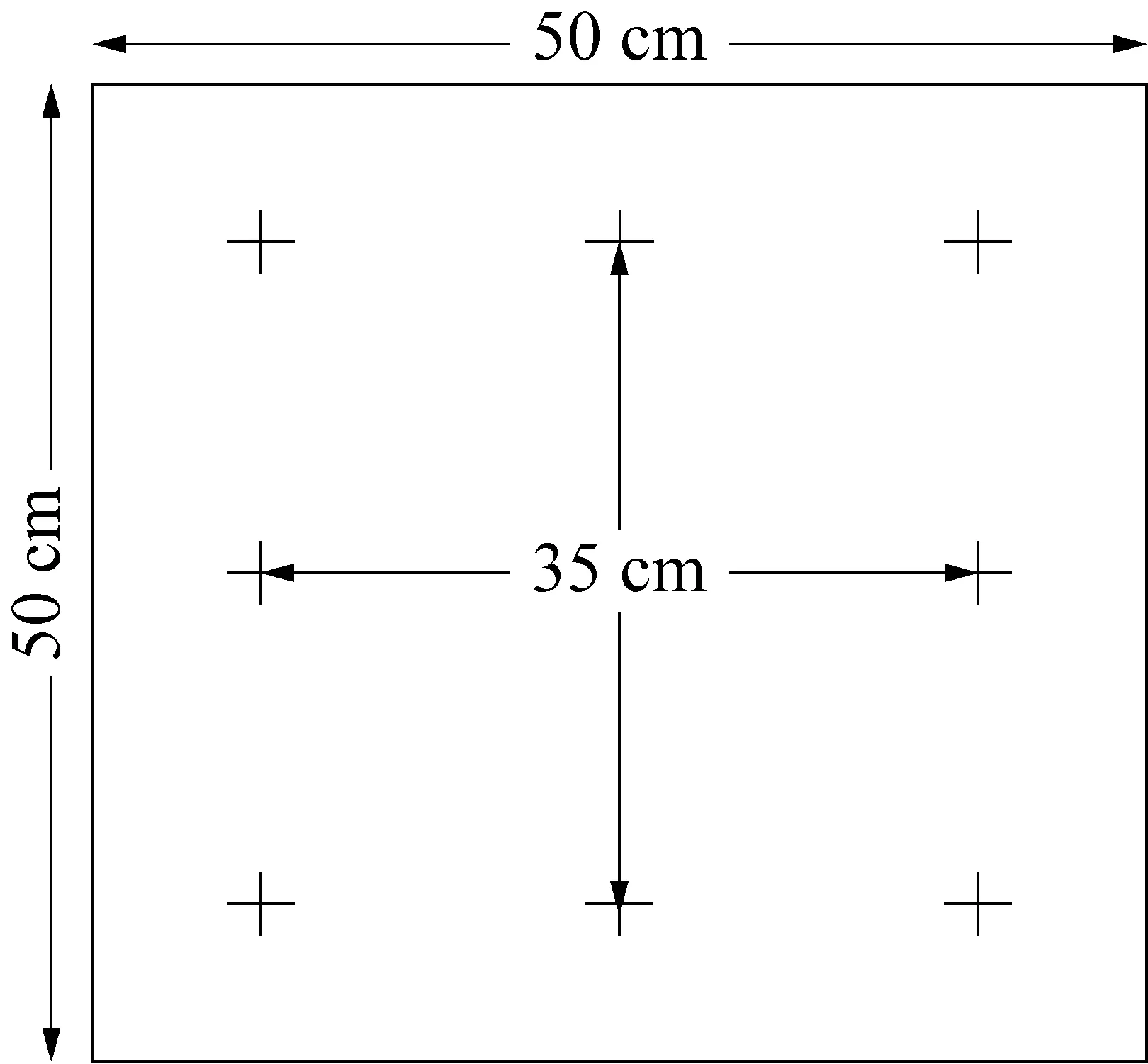
Fig. 2 Sample measurement for shrinkage and spirality test
1.2.5Determinationofburstingstrength
According to the ISO 13938-2:1999,twelve samples of 50 cm2area were taken for bursting strength test which has been done by Tru Burst Machine,UK by using the pneumatic pressure.
1.2.6Determinationofspirality
According to the AATCC 179,six samples of at least 35 cm×35 cm dimensions were taken for spirality test had done by Wascator Machine,UK.
2 Results and Discussion
2.1 ICI pilling test report
Textile fabrics contain small balls (pills,i.e.,roughly spherical masses) made of an entangled mass of fibers which may be defined as pilling[11]. Friction between the fabric surface results in loose fibers which were entangled into short fine hairs (fuzz) and,later on,spherical bundles were formed cling to the surface of the fabric[12]. According to the ISO 12945-1:2000 standard,the experiment results of ICI pilling test for 100% cotton rib (1×1),and cotton (95%) and Lycra (5%) rib were shown in Tables 2-3,respectively.

Table 2 Sample No. A: 100% cotton rib (1×1)

Table 3 Sample No. B: cotton (95%) and Lycra (5%) rib
The following ratings were frequently followed to observe the pill formation in a fabric[13]. The pilling performance was evaluated by grading.
Grade5No pilling
Grade4Slight pilling
Grade3Moderate pilling
Grade2Severe pilling
Grade1Very severe pilling
Based on the results of the ICI pilling test from Tables 2 and 3,the observations were shown on the above tables. The fabric samples were not significantly influenced by the elastane use but the better pilling resistance in wales direction has observed in the fabric of blended elastane cotton yarn.
2.2 Shrinkage test
A knitted fabric exhibits shrinkage or elongation during washing,dyeing or steaming,etc.[13]
Shrinkage is determined by[13]
(1)
whereDCdenotes the dimensional change of the fabric,Eis the original dimension of any particular direction of the fabric,andFis the dimension of the fabric after any specific treatment.
Here,shrinkage is denoted as “-” which is a decrease in dimensions. Elongation is denoted as “+” which is an increase in dimensions. Test results of shrinkage are shown in Fig. 3 and Table 4. The test results showed that the shrinkage performance of 1×1 knit rib fabrics of 95%/5% cotton/elastane was far better than the 1×1 rib fabrics of 100% cotton.

Fig. 3 Shrinkage of two different samples

Table 4 Shrinkage test results of different samples
2.3 Spirality test
Samples of 50 cm×50 cm dimensions were washed in 1 g/L soap solution and after drying the spirality had been measured. The test results are shown in Fig. 4 and Table 5 which revealed that the spirality has significantly improved after using the elastane in 1×1 knit rib fabrics.

Fig. 4 Spirality test result of the samples
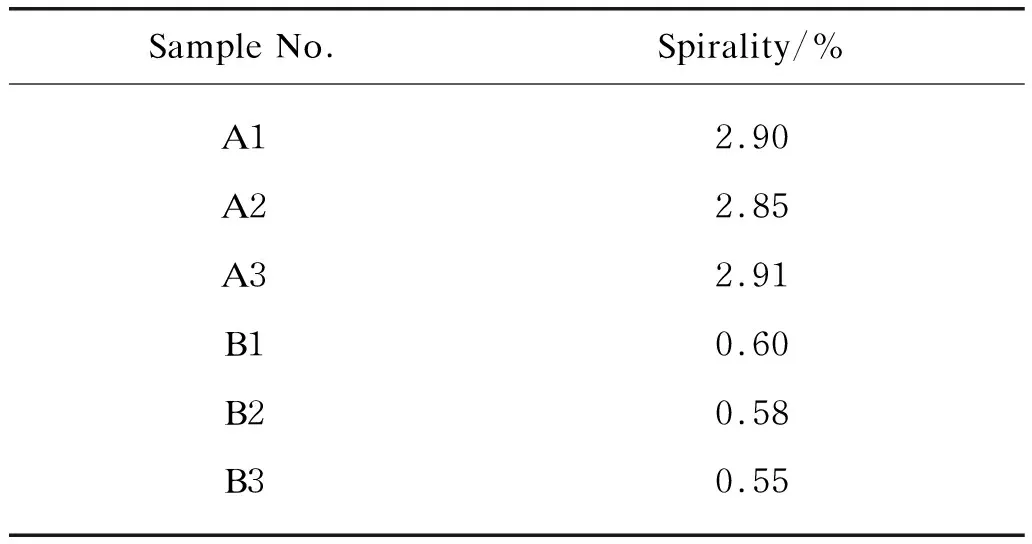
Table 5 Spirality test results of different samples
2.4 Bursting strength test
To test the bursting strength of two fabric samples,a perpendicular force was applied to each of the samples until it broke[13]. The results of bursting strength of two fabric samples were dictated in Table 6 and Fig. 5. The result revealed that there was no significant difference in the bursting strength results achieved using pneumatic burst testers.
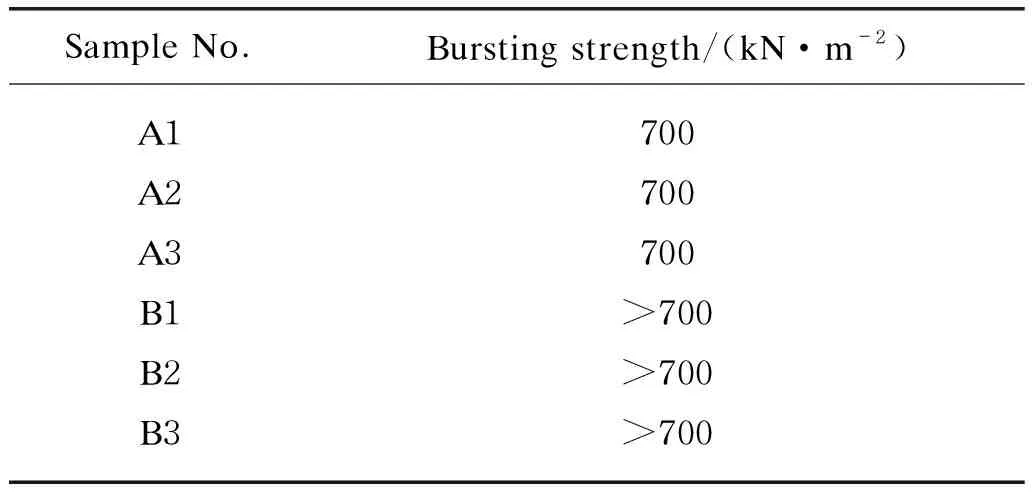
Table 6 Bursting strength test results of different samples
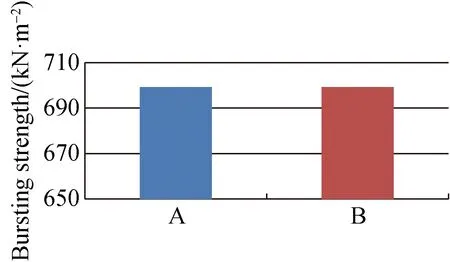
Fig. 5 Bursting strength test results of the samples
3 Conclusions
In this study,the physical and the dimensional properties of 100% cotton and cotton/elastane yarn were investigated. Though there was a subtle difference of bursting strength between 1×1 rib made of 100% cotton and cotton/elastane(95%/5%) blended yarn. On the other hand,the other properties such as spirality,shrinkage and pilling resistance behavior were better in blended yarn manufactured samples than the pristine samples.
ORCIDID
SYED Rashedul Islam,https://orcid.org/0000-0002-8784-426X
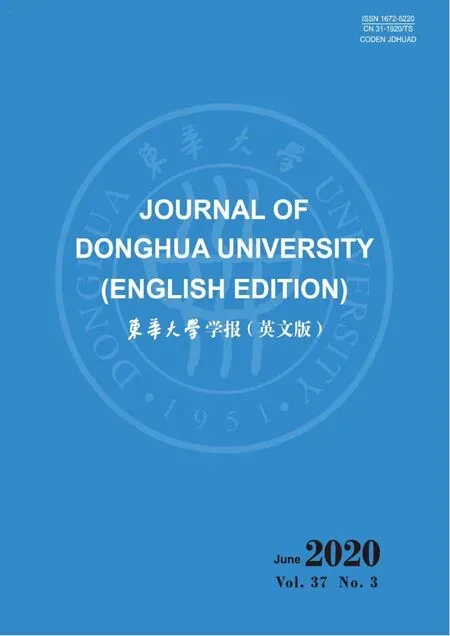 Journal of Donghua University(English Edition)2020年3期
Journal of Donghua University(English Edition)2020年3期
- Journal of Donghua University(English Edition)的其它文章
- Recent Progress for Gallium-Based Liquid Metal in Smart Wearable Textiles
- Accident Analysis and Emergency Response Effect Research of the Deep Foundation Pit in Taiyuan Metro
- Knowledge Graph Extension Based on Crowdsourcing in Textile and Clothing Field
- Analysis on the Application of Image Processing Technology in Clothing Pattern Recognition
- Clothes Keypoints Detection with Cascaded Pyramid Network
- Encryption and Decryption of Color Images through Random Disruption of Rows and Columns
